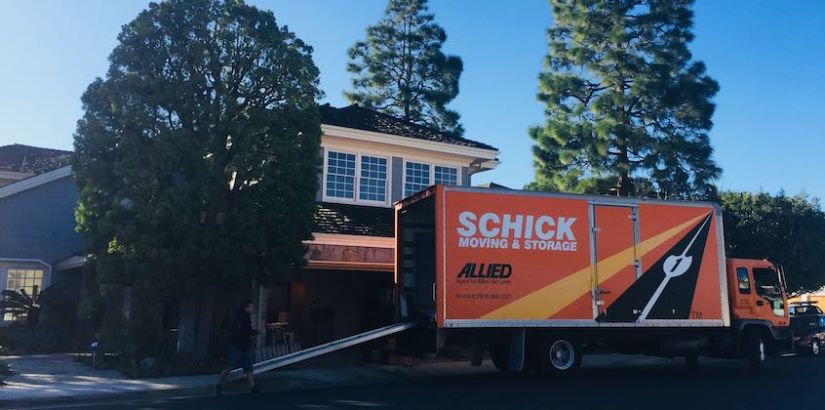How to Store an Aquarium
Need to store your aquarium in a storage unit? First, rent the perfect one and then read on for tips on how get the tank ready for storage.
Preparing the Filter
Your tank will have one of three types of filters: mechanical, biological, or chemical. Normally, you would want to clean a mechanical filter about every four weeks with water from the tank, to not add stress to the fish with a change in water quality. However, since you’ll be putting it in storage for a time, you can use distilled water or tap water, with an equal amount of white vinegar.
Unplug the filter and remove it from the aquarium. If the machine uses a carbon filter or sponge, throw this part away, since it will be out of the tank awhile and should be completely replaced when you’re ready to use the tank again. Clean the filter with water and a filter cleaning brush. Scrub out any algae, and let the machine air dry for several hours.
Once you’re sure the filter is completely dry, pack it in a box. We recommend using crumpled packing paper as packing material, and including a dessicant packet to ensure any excess moisture gets absorbed. Label the box so that you know what’s in it later.
Preparing the Lights
Unplug the aquarium lamp and remove it from the tank. Carefully remove the bulbs. If they are still in good condition, dry them with a clean cloth, and wrap them in packing paper. Clean the lamp with a 1:1 solution of vinegar and water, dry, then let air dry for about an hour.If you still have the box the lamp came in, pack it in that box. If not, purchase a box about the right size for it and the bulbs. Wrap the lamp in packing paper, and place it in the box with the bulbs. Toss in a dessicant, and finish filling the box with crumpled packing paper before sealing it with packing tape.
Preparing the Decorations
Fish tank decorations make a tank environment fun. They’re also easy to store.
With a cloth or sponge, and a filter cleaning brush for hard-to-reach parts, scrub the toys to remove algae and other build-up. Dry them with a cloth, then let them air dry completely. You can then wrap them in packing paper.
If you would like to reuse the aquarium gravel later, place it in a pot of clean water and boil it for about five minutes. Let the water cool and strain it in a colander, then put the gravel on a large cloth. Repeat until all the gravel is clean. Spread it out a bit if you can, and let it air dry.
Next, pack the gravel into several large Ziplock bags, and put a desiccant in each.
Preparing the Aquarium
Once the aquarium is empty and you have taken care of the filter, decorations, and gravel, it’s time to prepare the tank itself.
Fill the tank with tap or hose water and add bottle of vinegar per one gallon of water. (In fact, you can add the bleach as the tank is getting filled.) Once full, let it stand for about an hour. Scoop some of the solution into a pot, then empty the tank. Use some of the water to scrub the outside and inside. Rinse with hose water, dump the water again, and dry with a cloth. Give the tank a few hours to air dry completely.
Once it’s dry, you’ll need a box to store it in. If you have the box it came in, that’s great. However, many aquariums are large, and for most of us, keeping a large box is impractical. So, purchase a box that your aquarium will fit in. Your self storage facility may have one, or you may need to check your local home improvement store. Make sure the box is sturdy and made of thick enough cardboard to handle the weight.
Line the bottom of the box with crumpled packing paper, then gently lower in the tank. Add crumpled paper around the outside of the aquarium, between the glass and sides of the box.
Add a layer of crumpled packing paper to the bottom of the aquarium, and place the bags of gravel and the decorations in the center. Drop in a dessicant, then finish filling the aquarium with the packing paper. Close and seal the box with packing tape. Make sure the tape is tight along the bottom of the package as well.
With these steps finished, you’re ready to put your entire aquarium system in storage.
Climate Control
Modern aquariums use silicone to seal edges that could otherwise leak. This is great news, since prior to the 1960s, manufacturers used cork to seal these edges. The cork would need to absorb tank water in order to expand and form a seal. A major problem with this was that in storage, the cork could dry out and crack, becoming unusable. Today’s aquariums don’t have that problem.
However, depending on the weather in your area, you may want to get a unit with climate control. By keeping the temperature within a safe range for most items, and by keeping the humidity at safe levels--neither too humid nor too dry--climate control will protect parts of your filter and lamp from expanding and contracting with heat and cold, and prevent mold from forming on any surfaces.Important Notes
The most important side note here is that these instructions are for preparing your tank for storage only. If you simply need to clean your aquarium for the sake of your fish, you’ll use different cleaning products and methods to preserve the various good bacteria and algae that live in the aquarium.
Now, your aquarium should be in good shape for a long time, ready for you to retrieve it and fill it with beautiful new fish when you’re ready.




